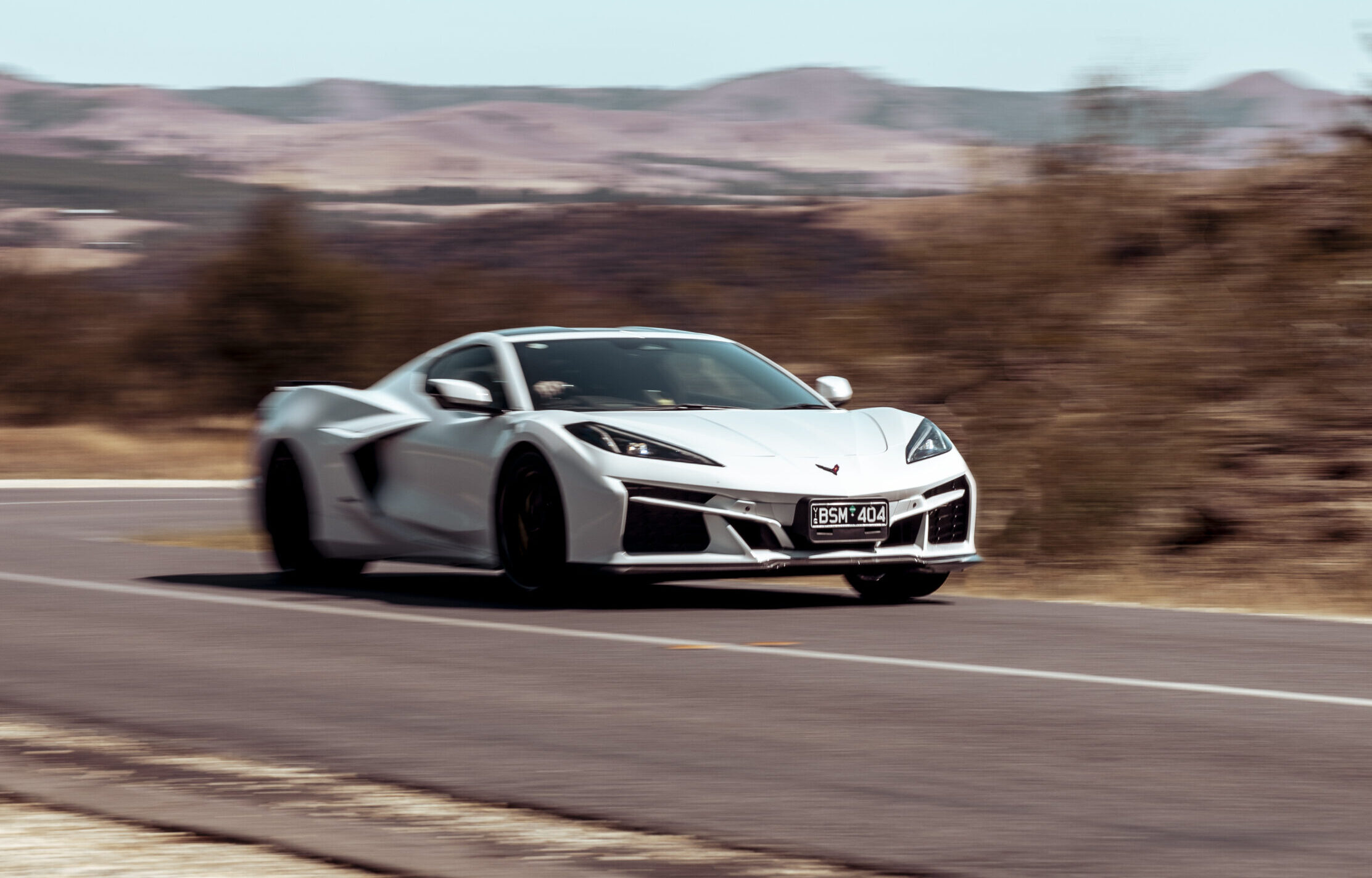
As sure as night follows day, supply nearly always follows demand. For an example or two, you need only look at the rise of locally-made gin, fidget spinners, and the global popularity of the dual-cab ute.
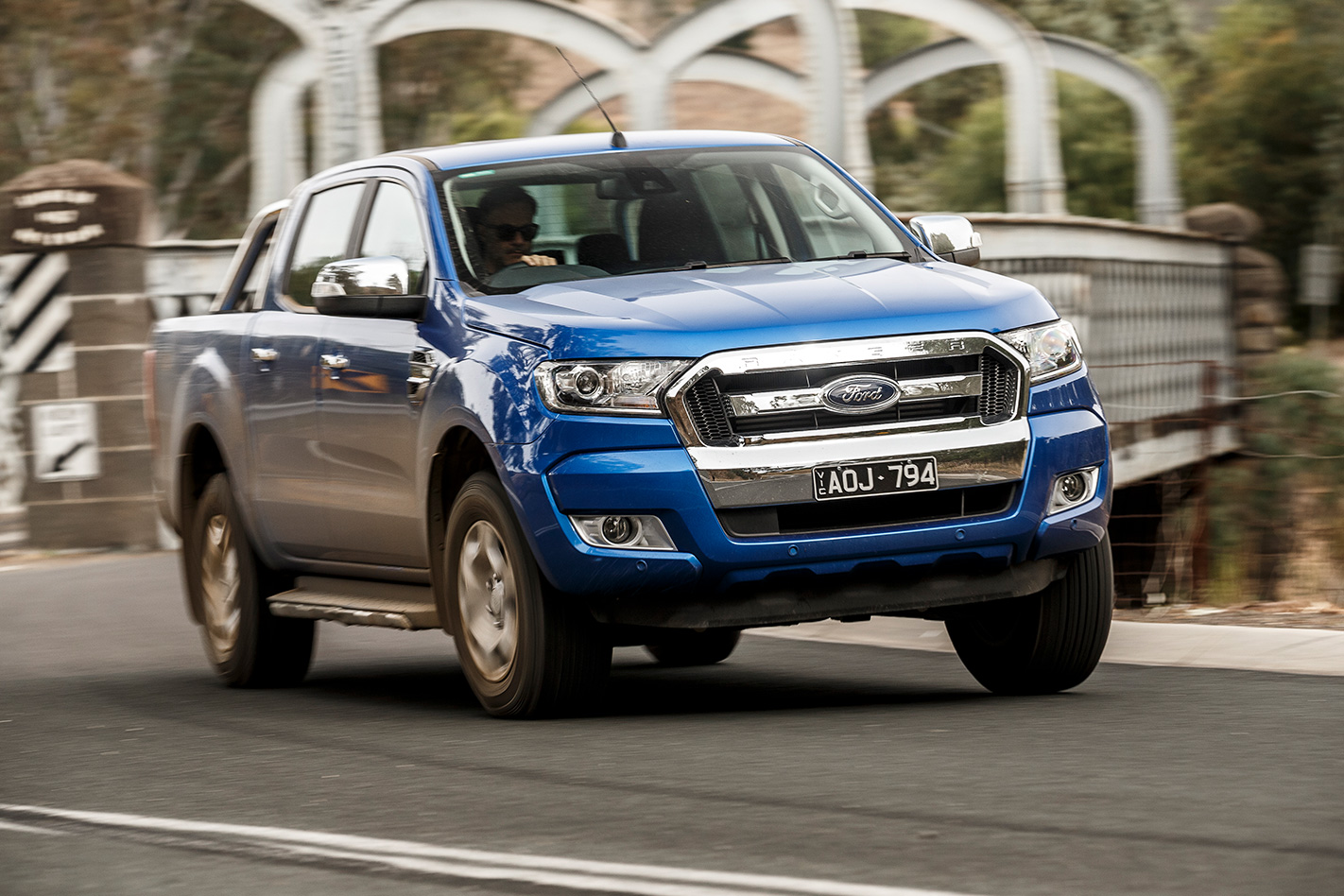
With the demand for the jacked-up, tray-backed family wagons skyrocketing in many global markets, a growing number of brands have responded for fear of missing out, adding plenty of fresh metal into the flourishing segment.
One of the latest is Mercedes-Benz, launching its new X-Class into the fray this year. Underpinned by mechanicals from the Nissan Navara but topped off with typical Merc styling inside and out, and its own chassis fettling.
We pitched the greenhorn of the one-tonne ute arena against an established stalwart – the Ford Ranger – to see if the newcomer has the credentials to garner attention in an increasingly crowded market.
Price and equipment
Ford Ranger: For a sticker price of $57,690, the XLT ranks second only to the Wildtrak in specification and brings an impressive selection of equipment. Included in the price are a host of practical features including 230-volt and 12-volt power supplies with a second battery and a second 12-volt socket in the plastic-lined tray, there are parking sensors all round (complemented by a reversing camera) and, unusually, a towbar is also standard. Adding to the tough looks are 18-inch alloy wheels, side steps, rear privacy glass, chrome-look sports bar, fog lights and projector headlamps, while metallic paint is a $600 extra.
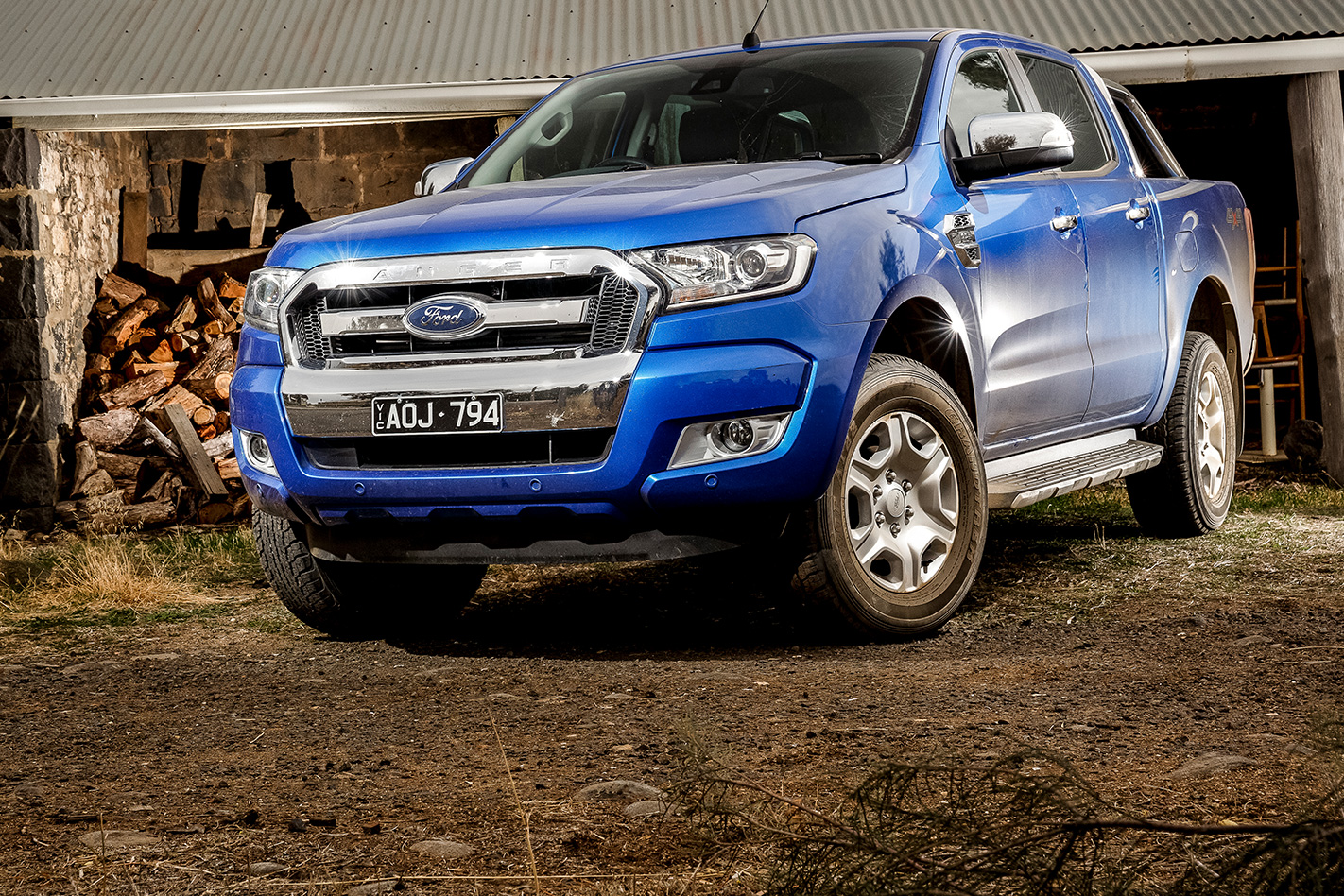
There’s more kit inside too with the latest version of Ford’s Sync information and entertainment, accessible through an 8.0-inch touchscreen with digital radio as well as dual-zone climate control, voice control, a cooled central storage box and a dual colour driver information screen.
Under the bonnet, this variant gets the largest engine in the segment with a 3.2-litre five-cylinder diesel that sends 147kW and 470Nm to the rear wheels via a six-speed auto transmission during normal driving, can be electrically switched to four-wheel drive and low range for more challenging terrain. The rear diff is also lockable.
In the general ute landscape, this Ranger is on the pricier side but it’s equipment-rich and represents great value if your budget will stretch.
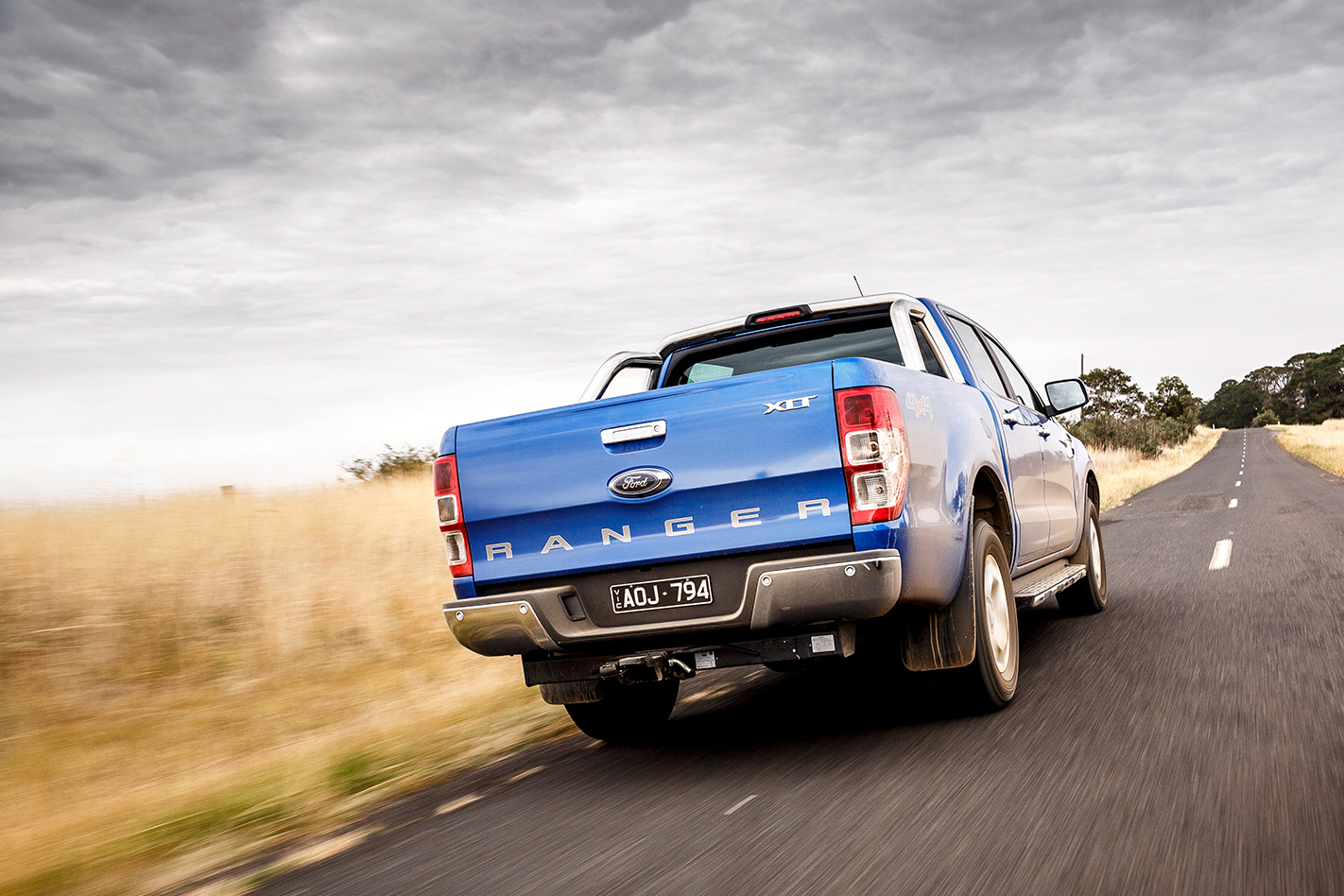
From a safety perspective, the Ranger offers a host of driver assistance and safety equipment. Adaptive cruise control is a rarity in the ute segment but the Ford has it along with lane keeping assistance and collision warning as part of an optional pack. Standard fare is hill-hold, trailer sway control, tyre pressure monitoring and six airbags.
Mercedes X-Class: For its one-tonne foray, Mercedes has aimed for the premium end of the market, offering a good level of equipment no matter what the variant, especially when it comes to safety. The Pure is at the more basic end but this Progressive version sits in the middle of the range at $57,800, beneath the Power flagship.
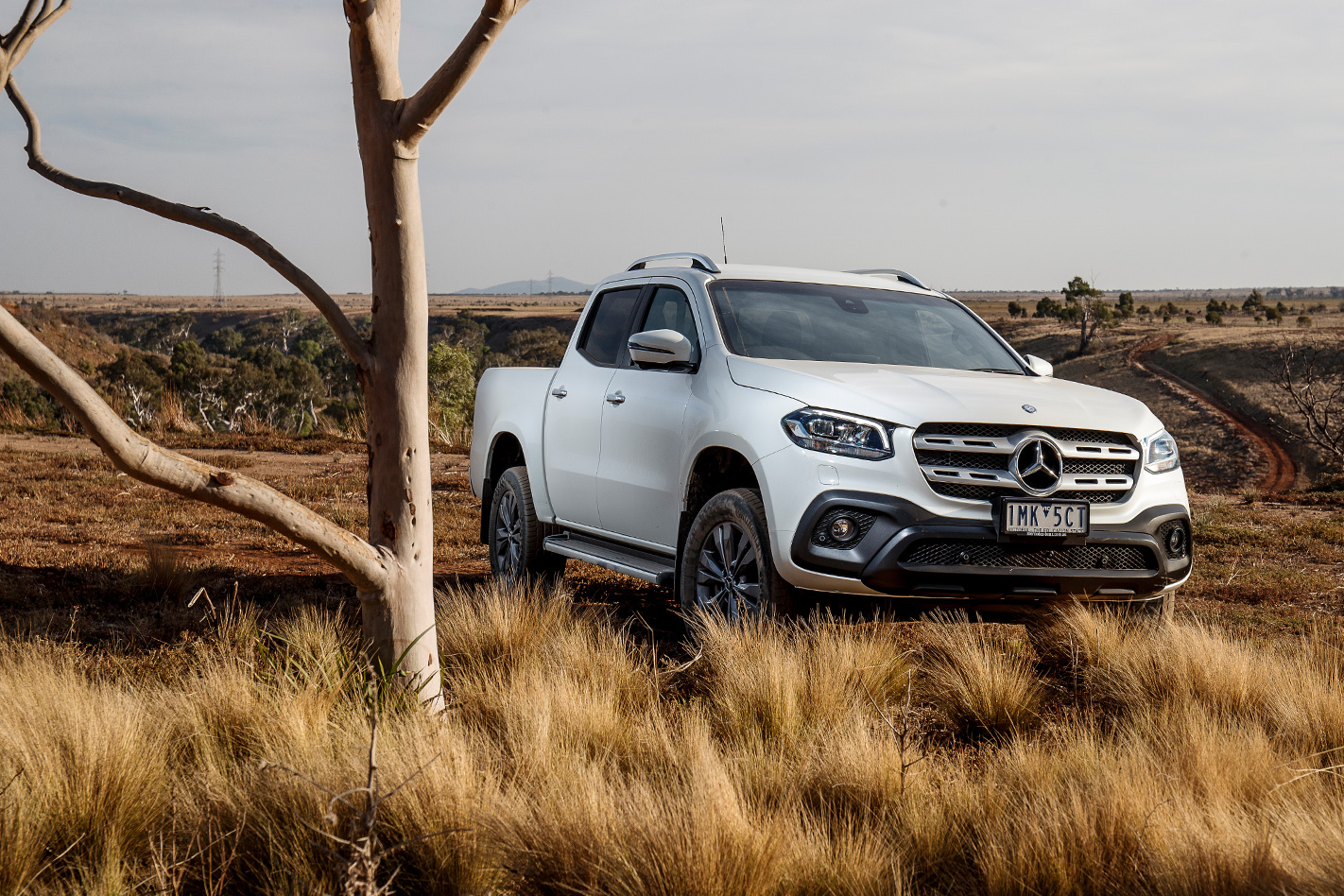
Interior kit and features include a 7.0-inch central screen with navigation and digital radio, higher-grade fabric for the seats, leather upholstery for the steering wheel, handbrake (not electric), shift paddles and an eight-speaker sound system. There are also rain-sensing wipers, a reversing camera and some silver interior trim for a more premium look.
On the outside there are 17-inch alloy wheels, body-coloured bumpers in place of the Pure’s bare plastic items, halogen headlights, fog lights, illumination for the load area, more silver trimming and adjustable load area tie-downs.
Compared with the Ford, the Mercedes has a bantamweight engine that displaces just 2.3 litres but it packs a big punch thanks to twin turbocharging. Outputs of 140kW and 450Nm nip at the heels of the Ranger’s much larger engine. Power finds its way to the rear wheels via a seven-speed automatic transmission but all four wheels can be engaged electrically as can a low-range gearbox and locking differential.
Safety is a strong point for the Mercedes with seven airbags, trailer stability assistance, hill-hold and tyre pressure monitoring but, unlike the Ford, autonomous braking, collision warning and lane departure and warning is standard – a feature unique to the segment.
Interior and connectivity
Ford Ranger: Now in its third generation, Ford’s Sync3 infotainment system is still one of the easiest to navigate without appearing basic, and is packed with features, including voice activation. Alternatively, occupants can switch to a mirrored version of their smartphone with Apple CarPlay and Android Auto compatibility. It also incorporates Bluetooth connectivity as well as two front USB ports, while second row passengers can charge devices with another 12-volt socket in the back.
Rear occupants are also treated to a centre armrest, supportive and comfortable seats with plenty of room for up to three adults, and high-grade fabric upholstery throughout. General cabin quality and style is in keeping with the Ford family – everything appears to be well screwed down, there are no rattles or squeaks, and the cabin design is basic and unpretentious.
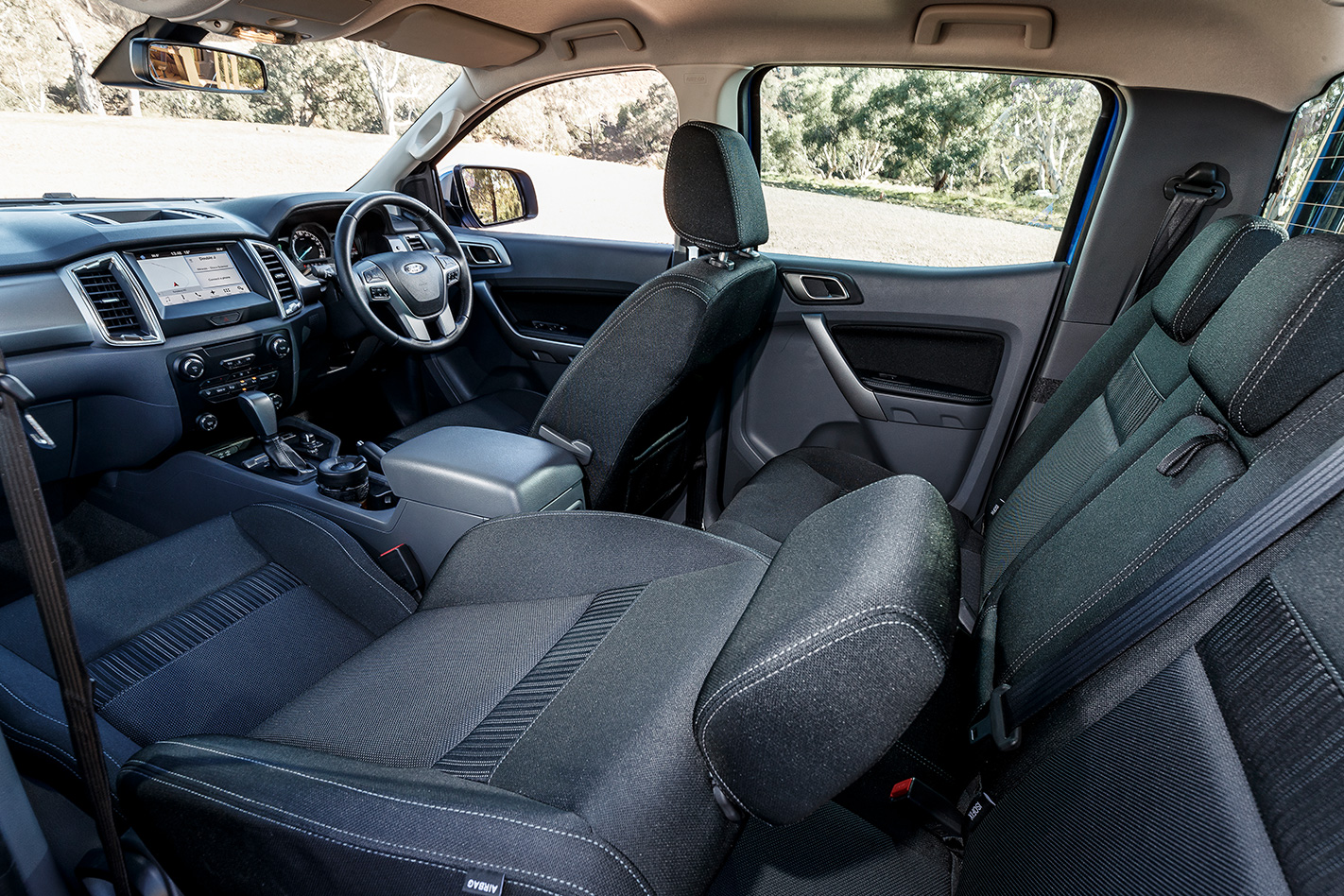
Mercedes X-Class: While some competitors in the one-tonne ute segment pay less attention to cabin styling, Mercedes has made its interior a point of difference, offering something that feels high-end and aligned with Mercedes DNA. First impressions when boarding are excellent, with sharp styling, an ergonomically laid out dashboard and top quality materials abound.
The effect of black roof lining, matched by a combination of black synthetic suede and leather upholstery complete with contrasting stitching (optional) is a cosy and sophisticated cabin that is unmatched for class by anything else at this price.
The X-Class’ driving position is comfortable courtesy of a steering column that adjusts for reach and rake, and feels more akin to a Mercedes passenger model than its commercial vehicles. Even the steering wheel, ergonomically shaped and almost AMG-esque in its presentation, stands well apart from the normally utilitarian tillers in the ute segment, and the high-resolution central information display nestled between the analogue gauges brings more visual sparkle to the X-Class cabin..
Unlike the Ranger there’s no centre armrest for rear passengers, but back seat occupants are well accommodated with an otherwise spacious rear bench.
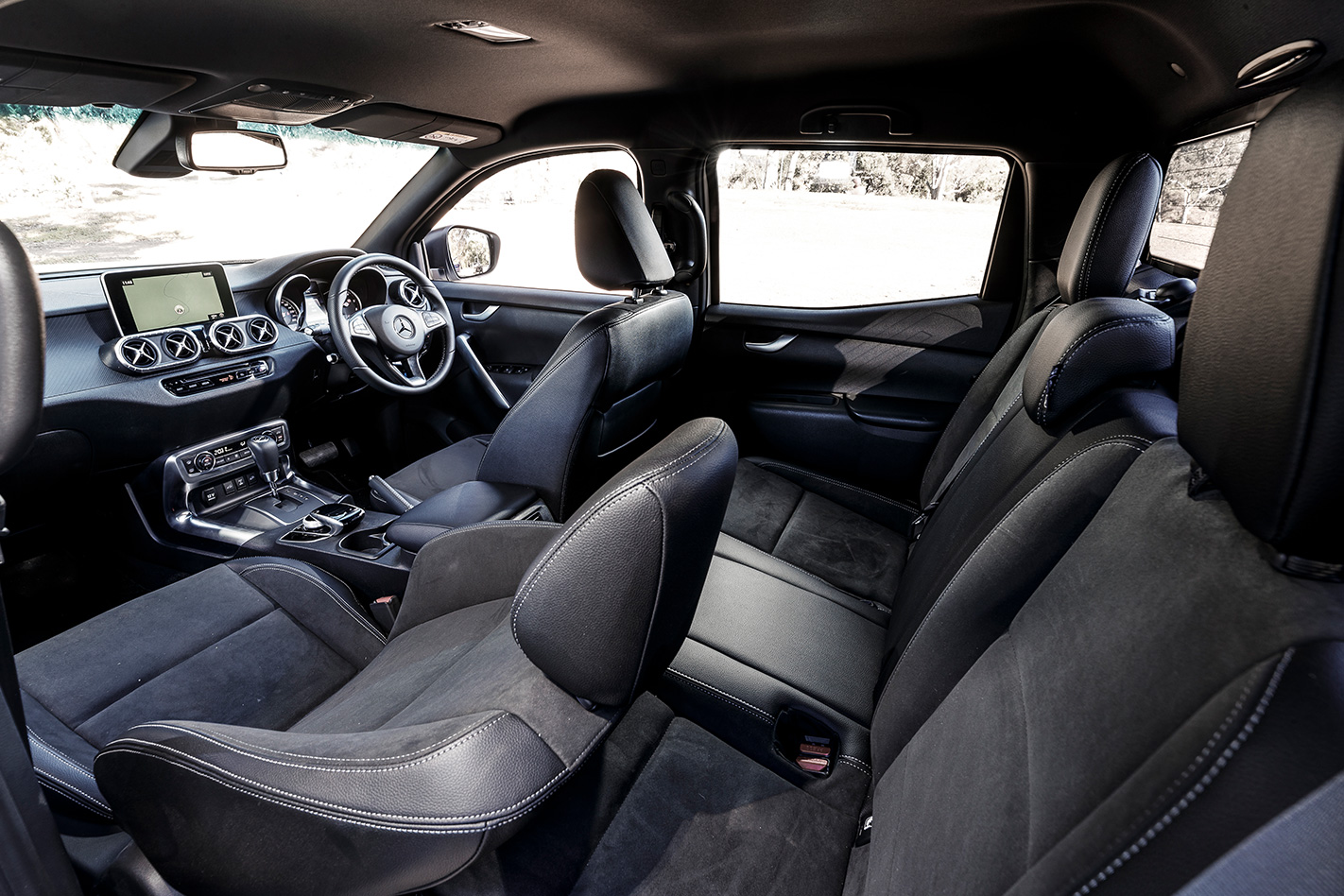
Where the X-Class loses marks is for its infotainment system. The central screen is not touch sensitive and functions are accessed by the control dial and shortcut buttons on the centre console. Furthermore, it’s not the usual high-feature system found in other Benzes – rather, the navigation software is by Garmin and has a distinctly aftermarket look and feel to its interface.
The tablet-style central screen floats above a quartet of gimbal airvents and certainly looks upmarket, but compared with Ford’s Sync3 approach, the Mercedes system is frustrating to use. Smartphones can connect via Bluetooth or USB, but Apple CarPlay and Android Auto is not supported, meaning you’re stuck with Benz’s inferior interface.
Ride and handling
Ford Ranger: It might not be built in Australia but the Ranger is arguably the most True Blue vehicle on sale in Australia, with both its design and engineering originating from Ford’s local development centre. Its suspension tune is also another giveaway and one of the best one-tonne set-ups for Aussie roads. On rough, poorly maintained surfaces, the chassis absorbs imperfections with aplomb and transmits very little jarring through to the cabin. It also resists lateral movement and recovers quickly from large bumps at speed. That well-behaved nature is backed up with obedient steering (that could have more feel and perhaps a faster rack ratio), but still manages to be confident and linear. The Ford proves that local knowledge and tailored chassis fettling count for far more than a coil-sprung rear axle, and sets a ride and handling benchmark for all others to aspire to.
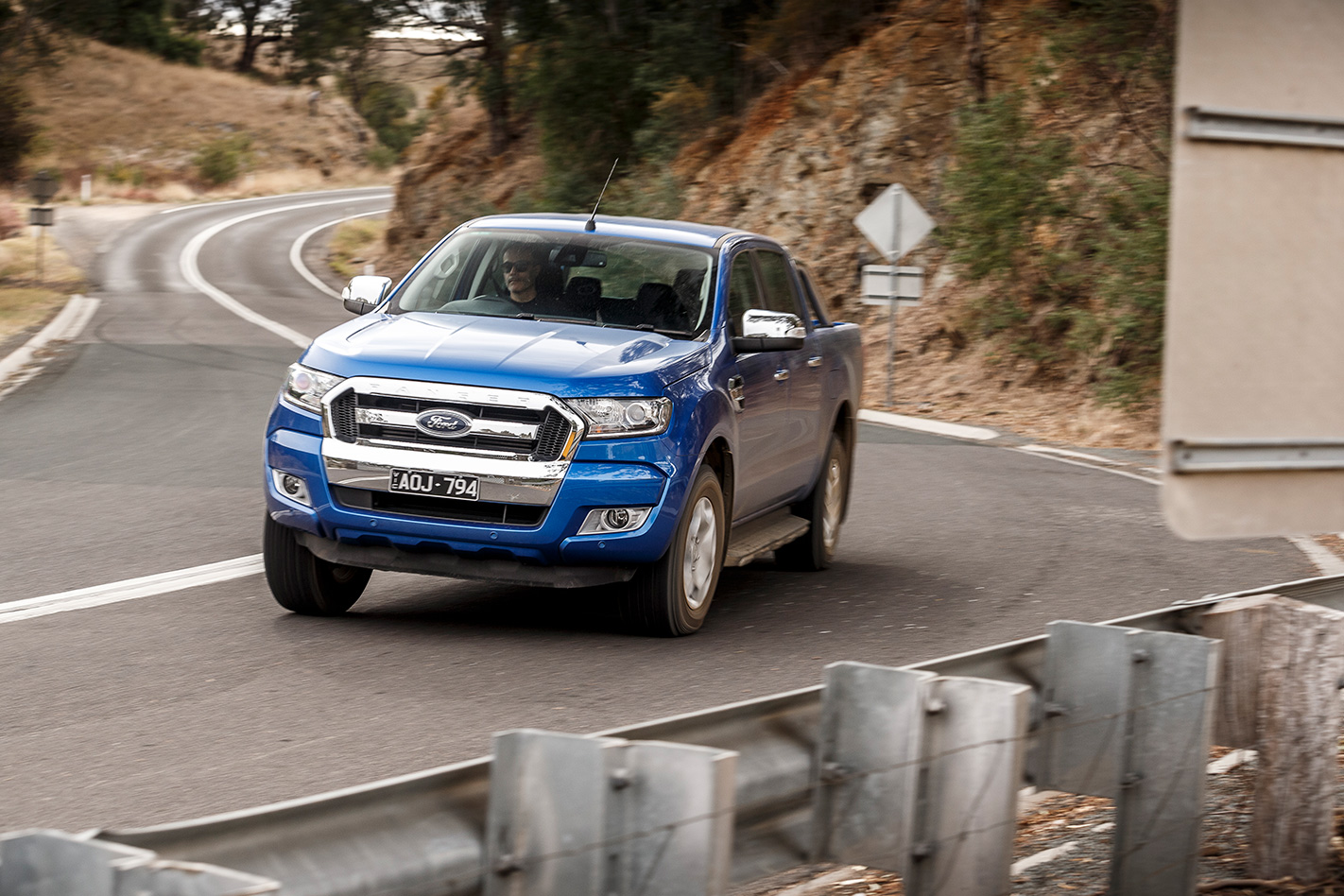
Mercedes X-Class: Under its suave German design, the Merc shares many of its mechanicals with the Nissan Navara – including the much-hyped coil-sprung rear axle (an otherwise unique feature in the market). Purported benefits include a smoother ride especially when unladen and more car-like dynamics. While the Mercedes ride quality is certainly not the worst in the class, it is not the cosseted glide that you might expect given how much fanfare the coil spring suspension was given. It’s a little fussy, although less nervous than its Navara relative thanks to Mercedes’ own chassis engineering work which has resulted in and finer handling on more challenging surfaces, but there are leaf spring set ups that offer a better all-round effect.
That said, the X-Class is among the more rewarding one-tonners to spend time in, whether you are steering or a passenger. Noise vibration and harshness (NVH) levels are particularly commendable and the four-cylinder diesel is quiet during all driving conditions. A fast steering rack ratio offers good feedback and feel, and pushing the X-Class through a few corners reveals a vehicle more sprightly than its appearance might suggest. There’s more good news when it’s time to stop, with disc brakes in all corners – only the Amarok has the same level of braking hardware. In testing, the Mercedes pulled up from 100km/h in 39.2 metres – the shortest distance of nine dual-cab contenders.
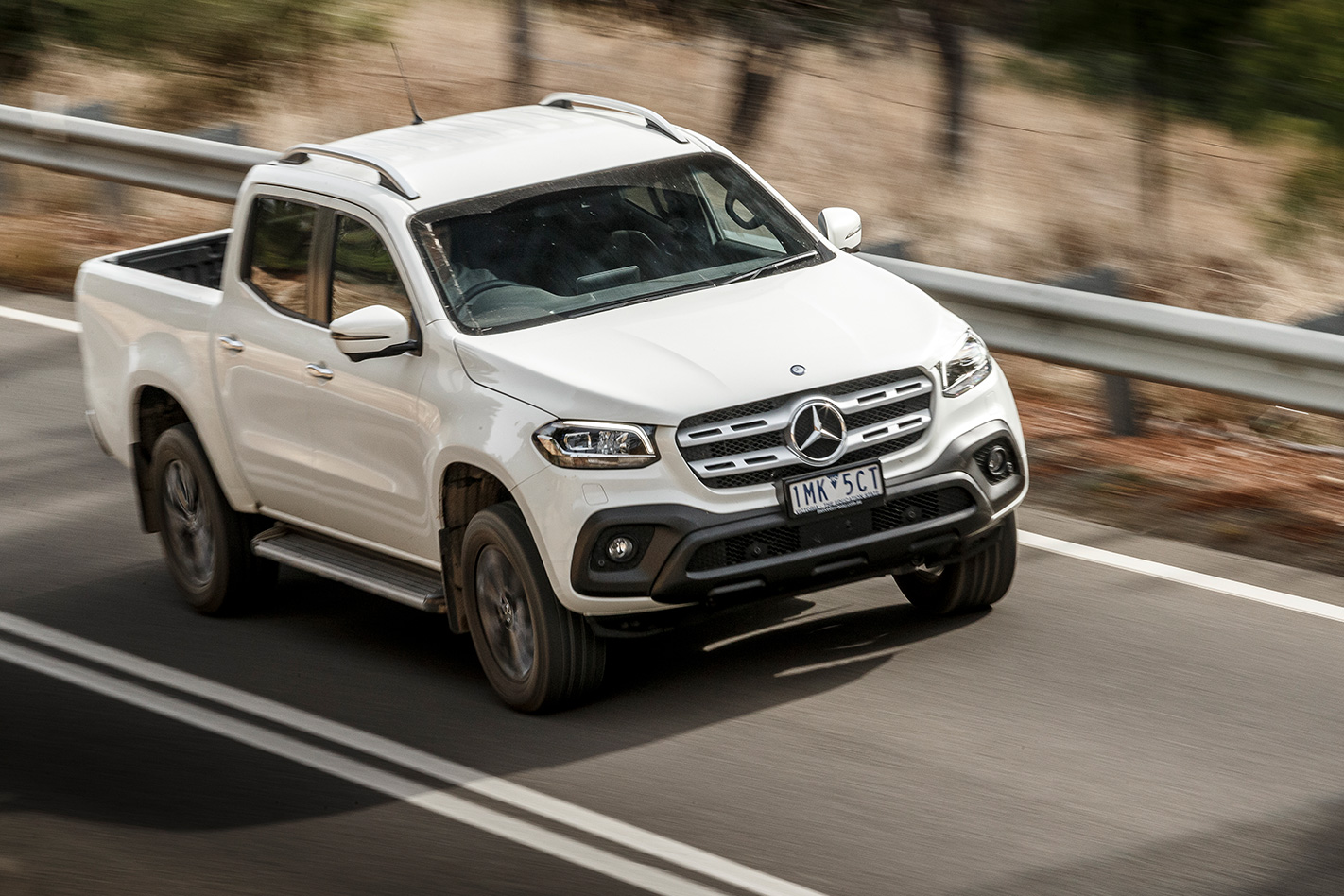
Performance and economy
Ford Ranger: Volkswagen’s recent V6 Amarok introduction proves that the largest engine is not necessarily the way to power superiority, pumping out more kilowatts and torque than the Ranger’s bigger five-cylinder, but it is still one of the Ford’s selling points. The extra cylinder elevates the 3.2-litre donk out of the clattery four-cylinder club and into smoother territory accompanied by a more satisfying and purposeful note. From the get go, the Ranger pulls hard but is also happy to rev and, in combination with an intuitive, silky transmission, the drivetrain is a great pairing. Its large capacity does come at a cost to fuel consumption however, and our test car used an average of 10.9 litres per 100km, which is on the high side but by no means the worst for a large, heavy duty pick-up.
Off the mark acceleration is strong and off-road performance ranks up there with the best thanks to long suspension travel and a locking rear differential. In loaded testing the Ranger also performed well and was only equalled by the VW Amarok V6 when we compared them with seven other rivals.
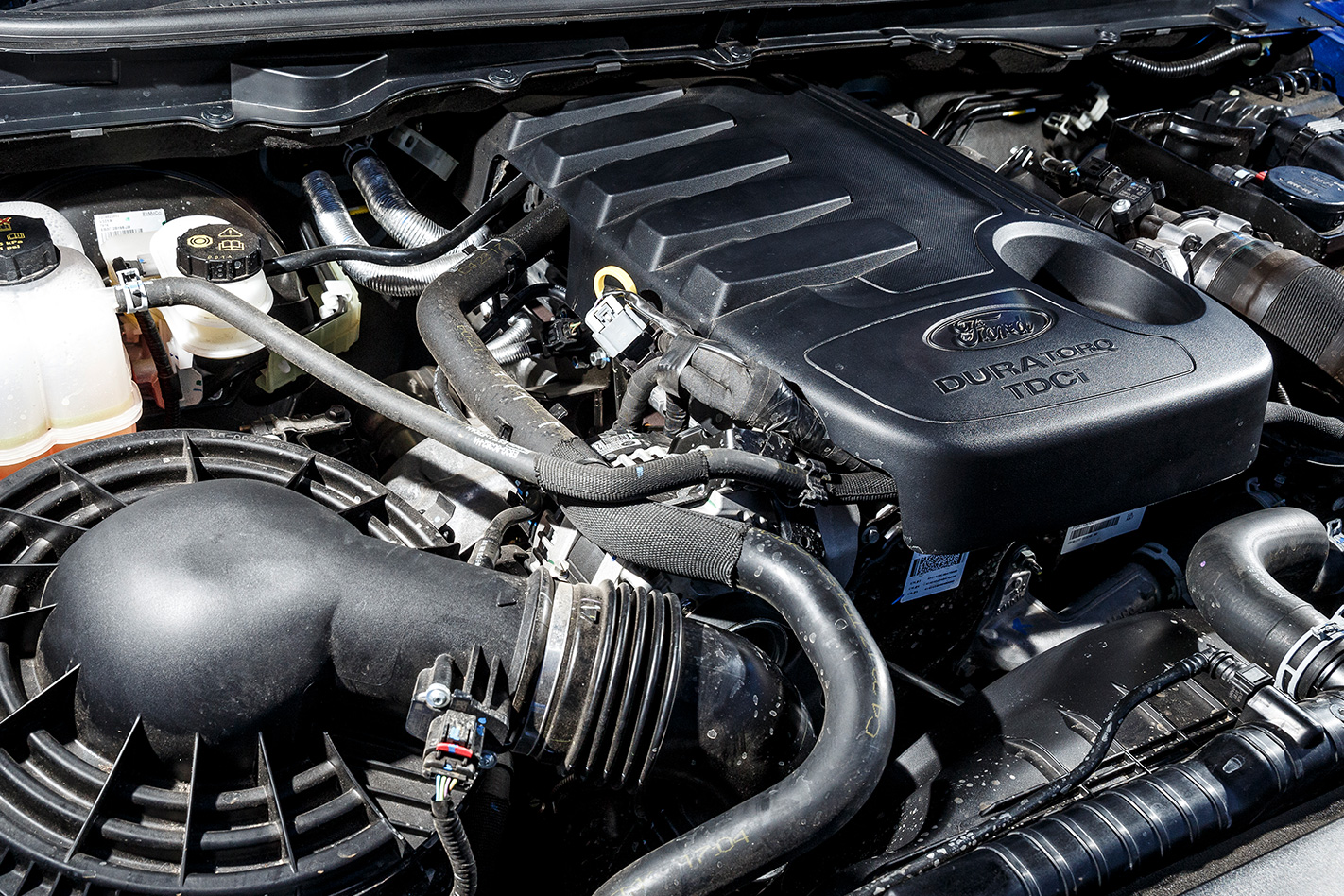
Mercedes X-Class: In a basic zero to 100km/h comparison it’s almost a dead heat, with the Ford completing the milestone dash in 10.1 seconds and the Mercedes barely pipping it at 10 seconds flat – that’s impressive given the difference in engine capacity. A significant displacement difference also appears to make little difference to fuel consumption, with the Merc asking for slightly less juice than the Ford at 10.4L/100km.
In the hands of German engineers, the seven-speed automatic transmission has been expertly calibrated and causes no headaches regardless of the driving conditions. As far as truck gearboxes go, the X-Class box performs perhaps the best trick of all – its behaviour is barely noticeable at all.

The X-Class’ off-road ability is less impressive than its on-road manners, and it lacks the suspension travel to be a true all-terrain hero – not to mention it sitting slightly lower with 222mm of ground clearance, versus the Ranger’s 237mm. It does at least keep front axle traction control active when the rear axle locking differential is engaged, which does help its cause in the rough.
Warranty and servicing
Ford Ranger: In May this year, Ford announced it would boost its warranty to five years on all models (including commmercials) with unlimited mileage for the duration. That means all versions of the Ranger are covered by the deal, bringing it into line with its arch rival the Holden Colorado.
Ford’s Service Price Promise Calculator caps the cost of a standard A or B logbook service, allowing owners to see the maximum cost they will incur and applies to all vehicles built from 2007, for life.
Mercedes X-Class: With the arrival of the X-Class, Mercedes introduced a new capped-price plan to the brand. The Service Care Promise deal covers all X-Class variants for three years, with intervals of 20,000km or 12 months – whichever occurs sooner. Total cost to customers is $2350 over the three years, provided no other unscheduled attention is required.
The Mercedes warranty cannot quite match the Ford’s with cover lasting just three years, although it is an unlimited kilometre deal. Like the Ranger, roadside assistance is part of the deal.
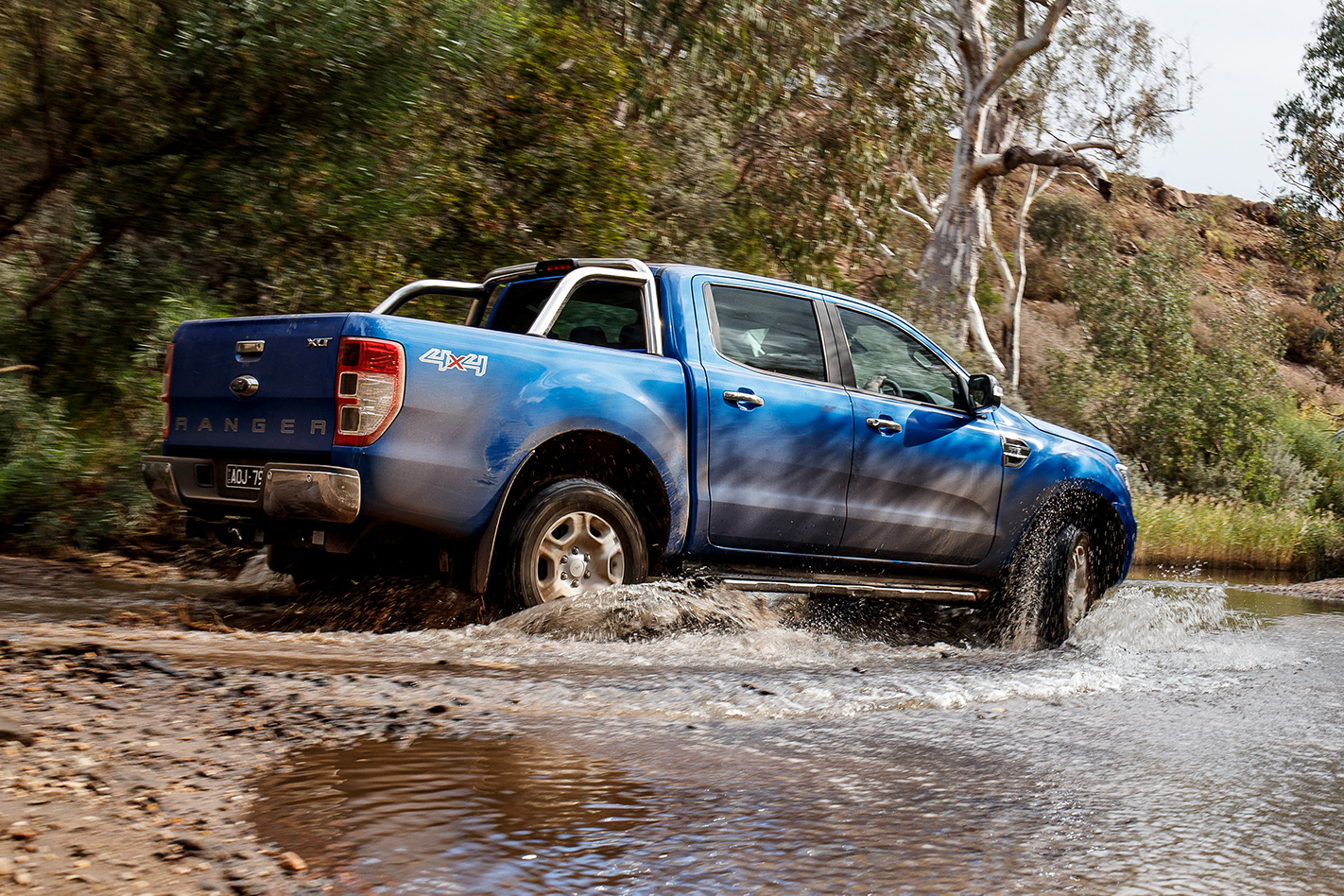
Verdict
For its first sortie on the dual-cab ute camp, Mercedes’ X-Class is a gallant newcomer. With established brand Nissan handling most of the oily bits, Mercedes got on with fettling the other parts to impart its own unique flavour. The result is a one-tonner with class-leading safety technology that is just about the most refined in its segment from a styling and interior perspective, yet can still hold its own for both on and off-road driving.
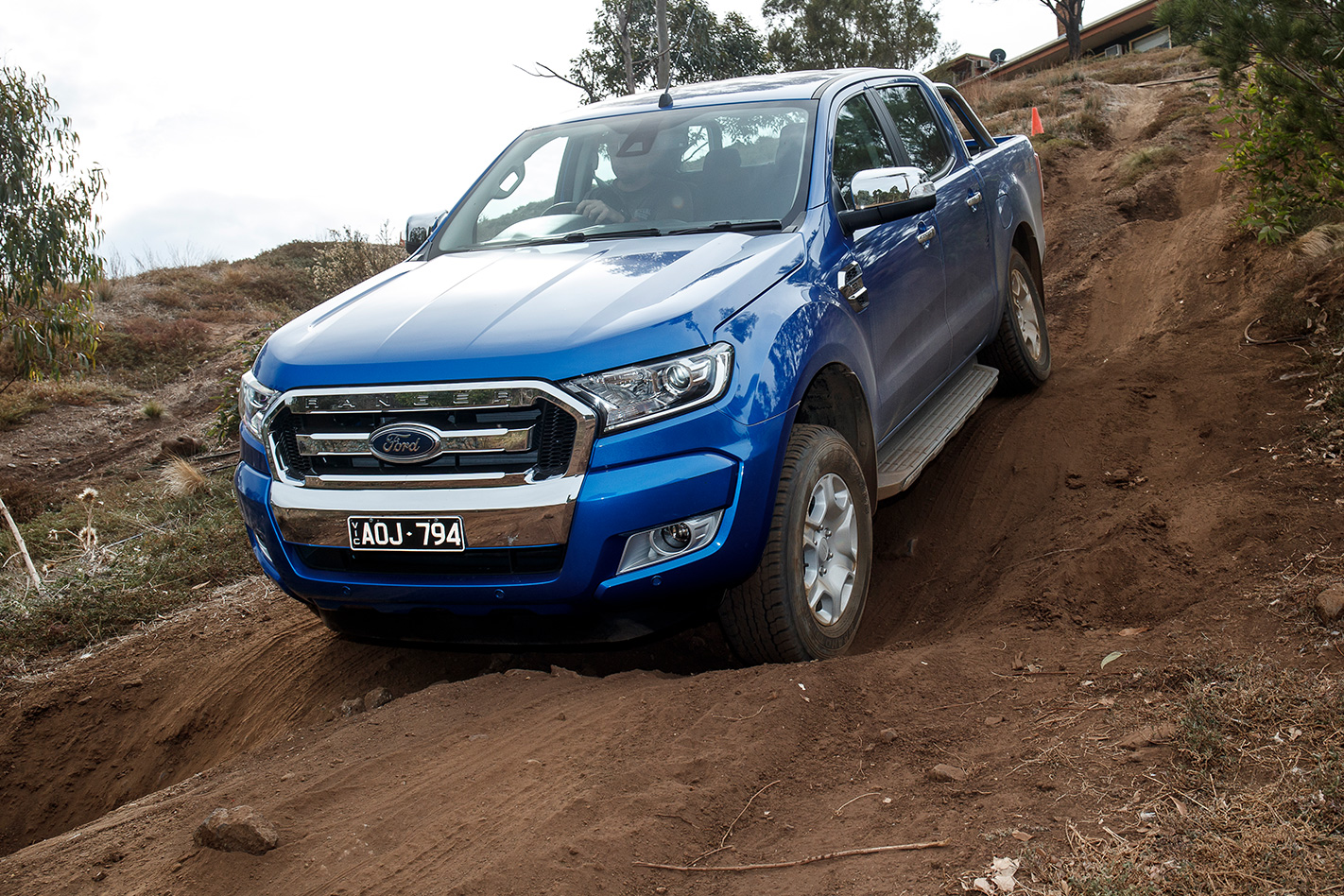
But it was always going to have its work cut out for it as long as the Ranger was in the field. Through a process of constant improvement, the Ford delivers an incredibly complete package for a price just a few hundred bucks cheaper than the Mercedes.
Not only is it heavily laden with kit, the Ranger is a master of both the unbeaten trail and surfaced road alike thanks to a staunch focus on meeting uniquely Australian requirements from both our roads and customer demands. As if all that wasn’t a compelling deal enough, the blue oval badge offers Aussies an option to wear a bit of patriotic pride on their sleeve by being the only vehicle currently on sale that was both styled and engineered Down Under.




